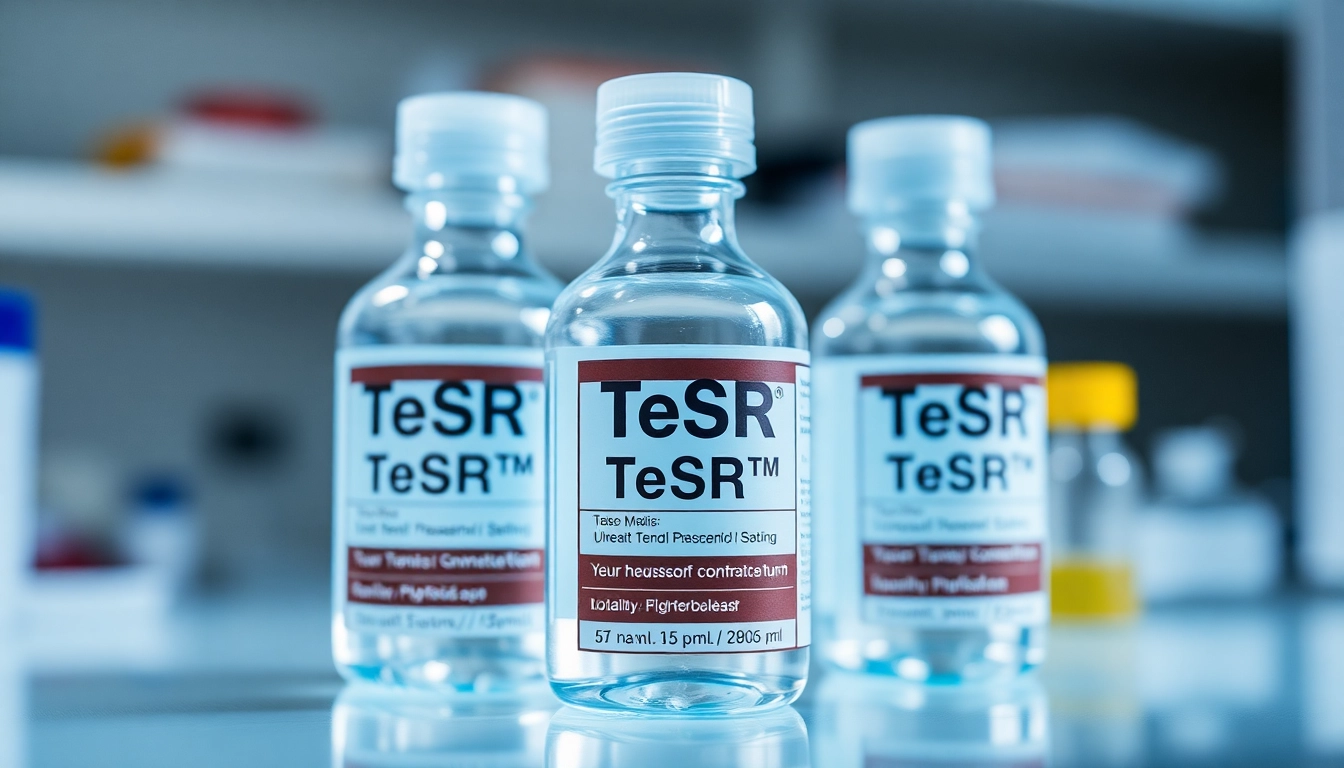Understanding TeSR™ Media
The field of stem cell research has seen transformative advancements over the last few decades, particularly with the emergence of pluripotent stem cells (PSCs). Among the pivotal innovations in this area is the development of TeSR™ media, a family of feeder-free culture media designed for the maintenance, reprogramming, and differentiation of human PSCs. In this comprehensive guide, we will explore the intricacies of TeSR™ media, its various formulations, applications, and the best practices for effectively utilizing these media in your research.
What Are Pluripotent Stem Cells (PSCs)?
Pluripotent stem cells are unique in their ability to differentiate into any cell type in the body, which opens up vast possibilities in regenerative medicine, drug discovery, and disease modeling. Importantly, PSCs can be derived from both embryonic origins and induced pluripotent stem cells (iPSCs), the latter of which are reprogrammed somatic cells that exhibit pluripotency characteristics similar to embryonic stem cells. These capabilities make PSCs a primary focus for scientists aiming to understand developmental processes and develop novel therapeutic strategies.
Overview of Feeder-Free Culture Systems
Traditionally, stem cell cultures relied on feeder layers to provide essential growth factors and extracellular matrix cues. However, feeder-free culture systems, such as those utilizing TeSR™ media, offer distinct advantages, including reduced variability, improved reproducibility, and enhanced safety by eliminating the risk of contamination from feeder cells. These systems are designed to provide all necessary nutrients and growth factors in a highly controlled environment, allowing researchers to maintain and manipulate PSCs more effectively.
The Importance of Batch Consistency in Media
Batch consistency is critical in stem cell research, as it directly influences the reproducibility and reliability of experimental outcomes. TeSR™ media is produced using rigorously pre-screened materials to ensure the highest levels of batch-to-batch consistency. This approach minimizes variation in PSC culture systems, enabling researchers to produce reliable and reproducible results across experiments. The foundation of TeSR™ media formulations is based on published studies by James Thomson, ensuring that each medium is backed by scientific research and optimized for performance.
Choosing the Right TeSR™ Product
With various formulations of TeSR™ media available, selecting the right product for your specific application is essential. Each variant is designed with unique features and advantages to cater to different aspects of PSC research, from maintenance to differentiation.
Comparison of TeSR™ Media Variants
The TeSR™ family includes several specialized formulations:
- mTeSR™ Plus: This enhanced medium is designed for long-term culture of hPSCs, featuring stabilized components that help maintain cell quality even during extended media changes.
- TeSR™-AOF: This medium is animal origin-free, providing additional safety assurances in terms of virus contamination risks.
- TeSR™-E8™: This formulation contains the minimal essential components for hPSC maintenance and is ideal for researchers requiring a simpler, low-protein culture medium.
- mFreSR™ and FreSR™-S: These media are specifically designed for efficient cryopreservation of PSCs, ensuring optimal recovery post-thaw.
- ReproTeSR™: Focused on reprogramming fibroblasts, this medium facilitates the generation of iPSCs from somatic cells.
Factors Influencing Media Selection
Several factors need to be considered when choosing a TeSR™ product, including:
- The specific type of pluripotent stem cells being used.
- The intended application—whether for maintenance, differentiation, or reprogramming.
- Specific experimental requirements, such as the need for a xeno-free medium.
- Budgetary constraints and resource availability.
Applications of Each TeSR™ Medium
Each TeSR™ medium variant is tailored for different applications:
- mTeSR™ Plus: Ideal for long-term maintenance of hPSCs, reducing the frequency of media changes and preserving cell viability.
- TeSR™-AOF: Best suited for sensitive applications where potential contaminations must be avoided, such as gene therapy and cellular regeneration research.
- TeSR™-E8™: Excellent for routine maintenance with a simple composition, allowing for ease of use without compromising cell health.
- ReproTeSR™: Specifically designed for generating iPSCs, making it suitable for both basic and translational research.
Enhancing Cell Culture with TeSR™
The implementation of TeSR™ media can be enhanced through best practices to ensure optimal growth and differentiation of pluripotent stem cells.
Advantages of Using TeSR™ Media
The primary advantages of TeSR™ media include:
- Enhanced Reproducibility: TeSR™ media’s rigorously tested formulations ensure high reproducibility across laboratory experiments.
- Feeder-Free Culture: Eliminating the need for feeder cells reduces contamination risks and simplifies culture maintenance.
- Enhanced Cell Quality: Designed to preserve cell morphology and pluripotency, facilitating reliable differentiation results.
Best Practices for Implementation
To fully leverage the benefits of TeSR™ media, researchers should adhere to the following best practices:
- Regularly assess cell morphology to ensure optimal culture conditions.
- Maintain a consistent media change schedule to prevent nutrient depletion and acidification.
- Utilize a sterile environment and follow proper aseptic techniques to minimize contamination risks.
- Use appropriate culture vessels to ensure gas exchange and prevent cell aggregation.
Monitoring and Troubleshooting Cell Growth
Continuous monitoring of cell growth and differentiation is crucial. Researchers should look out for:
- Changes in cell morphology that may indicate stress or contamination.
- Slow growth rates or differentiation inconsistencies as signs of suboptimal culture conditions.
- Cell aggregates, which may require adjustments in media volume or vessel type.
Research and Development Insights
As the landscape of stem cell research continues to evolve, so too do the insights derived from studies utilizing TeSR™ media.
Successful Case Studies Using TeSR™
A multitude of studies have successfully employed TeSR™ media to differentiate pluripotent stem cells into various somatic cell types, demonstrating its versatility. For instance, researchers have distinguished hematopoietic cells using TeSR™ media, contributing to advancements in regenerative medicine.
Expert Opinions on Stem Cell Culture
Interviews with leading experts in the field reveal a consensus on the importance of utilizing optimized media like TeSR™ for reliable outcomes. Dr. Joseph C. Wu, for example, highlights the role of specific media formulations in achieving precise differentiation outcomes in hematopoietic research.
Future Directions in PSC Research
Looking forward, the integration of genomic technologies and improved culture systems will likely enhance the efficacy of PSC research. The continued refinement of media formulations, such as with TeSR™, will play a pivotal role in these developments, allowing for more reproducible results and novel therapeutic advancements.
Ensuring Quality and Compliance
Quality assurance is critical in stem cell media production and application, particularly when translating research findings into clinical applications.
Understanding cGMP Standards in Media Production
The production of TeSR™ media adheres to current Good Manufacturing Practices (cGMP), ensuring that each batch meets stringent quality criteria. This compliance is vital, especially for researchers moving towards clinical applications of stem cell products.
Quality Control Practices for TeSR™ Media
Quality control encompasses rigorous testing of raw materials, in-process controls, and comprehensive final product evaluations. Each batch of TeSR™ media undergoes these practices to ensure consistency and reliability.
Addressing Common Quality Challenges
Common challenges, such as variability in cell performance or differentiation failures, can often be attributed to inconsistencies in media. By leveraging standardized protocols and utilities provided by TeSR™ media, researchers can mitigate these issues and optimize their culture conditions.
Conclusion
TeSR™ media stand as a cornerstone in the realm of pluripotent stem cell research, offering robust solutions for cell maintenance, differentiation, and reprogramming. With a diverse array of formulations suited to various applications, they provide researchers with the tools necessary for advancing our understanding of human development and disease. Adopting best practices and adhering to stringent quality standards will further empower the research community to leverage the full potential of these innovative media.


